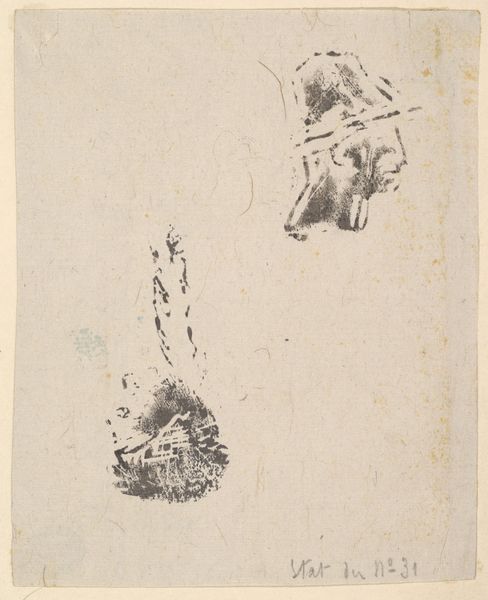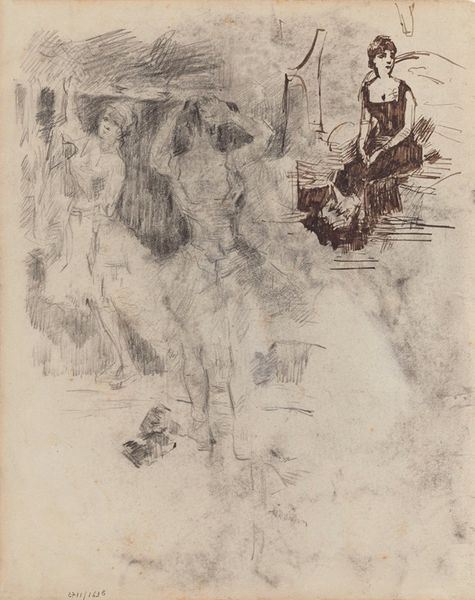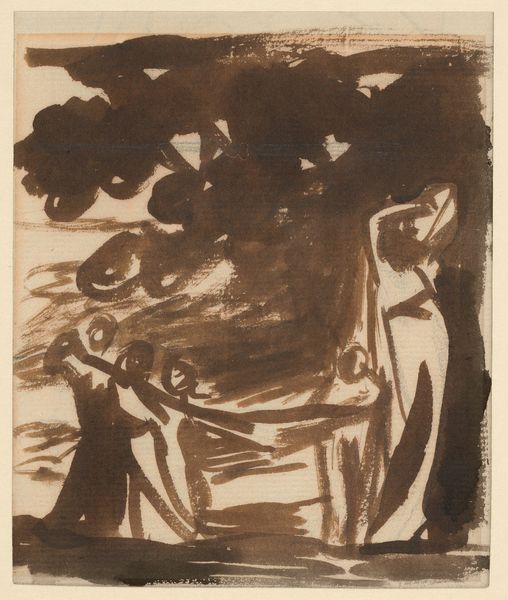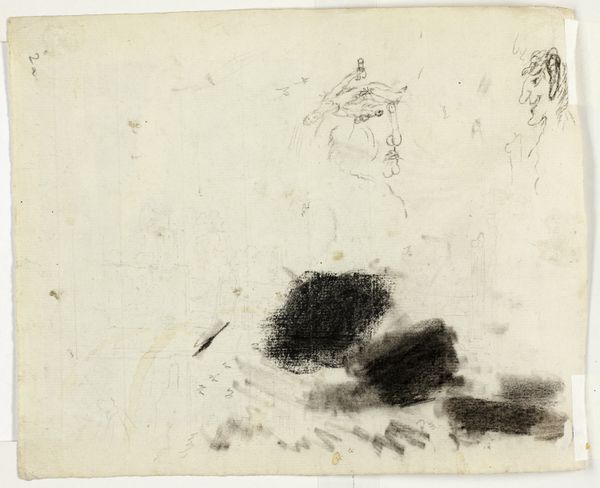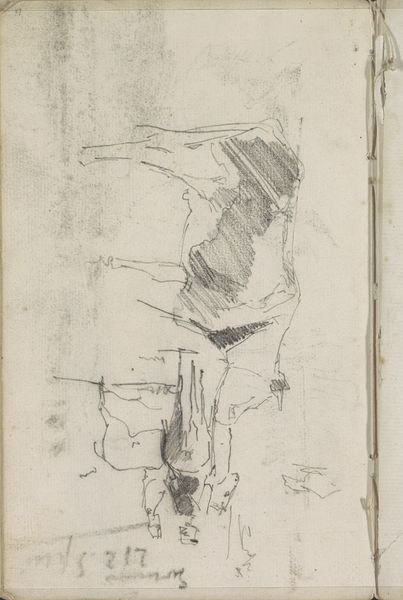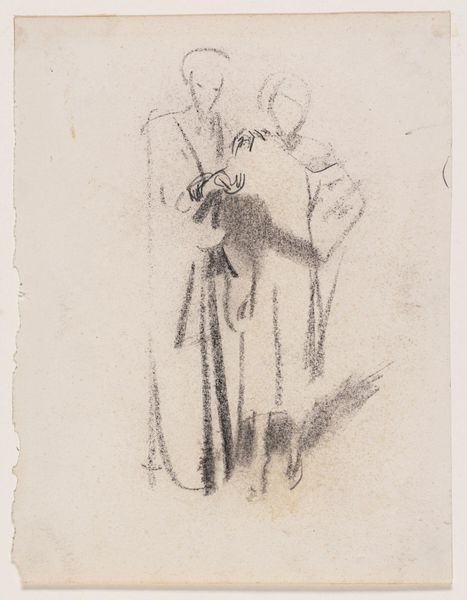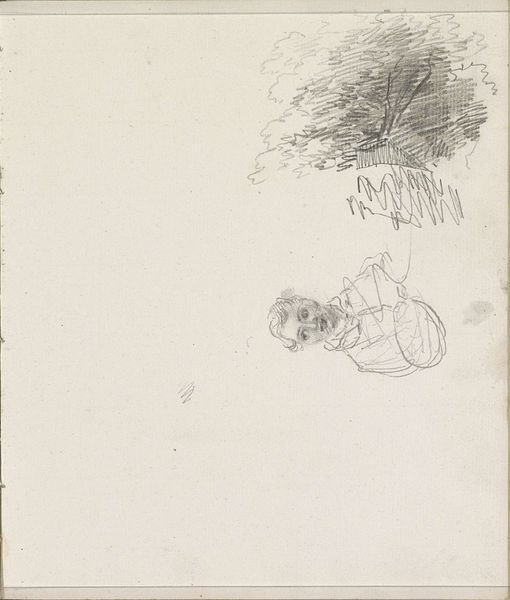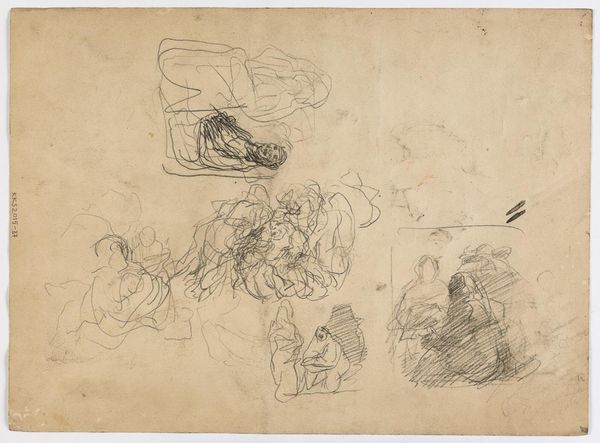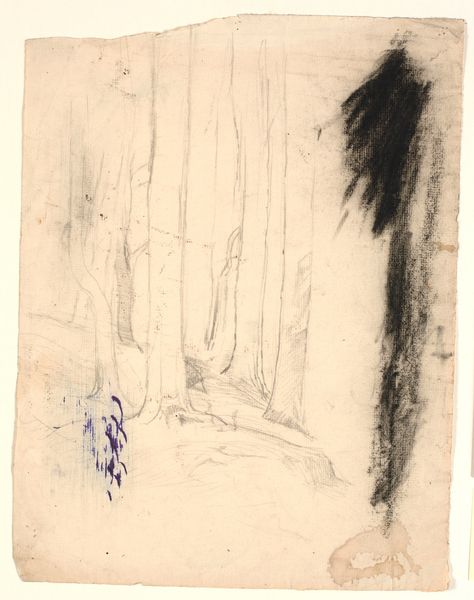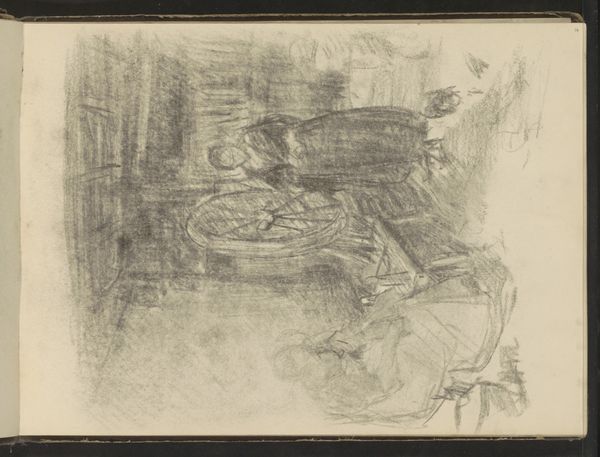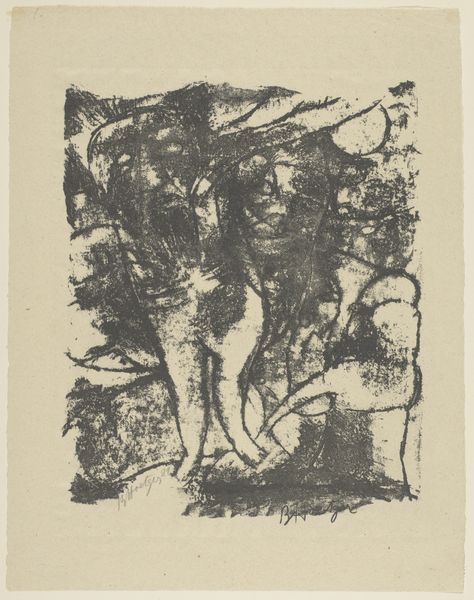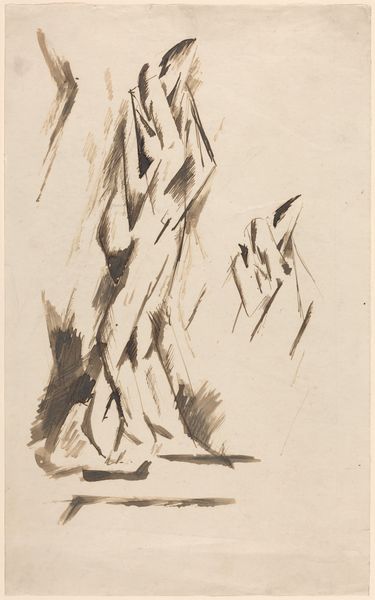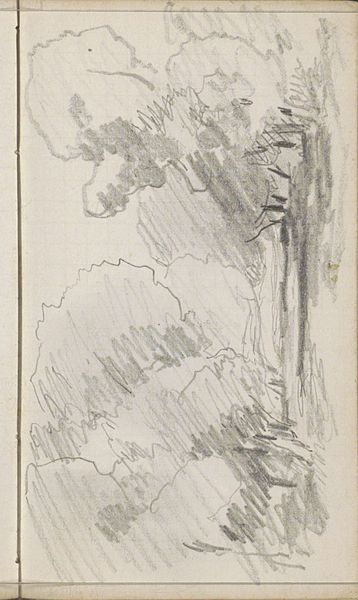
drawing, print, etching, paper, ink
#
drawing
# print
#
etching
#
landscape
#
etching
#
figuration
#
paper
#
ink
#
romanticism
Dimensions: 191 × 119 mm (image/plate); 213 × 165 mm (sheet)
Copyright: Public Domain
Curator: Let's discuss this etching, "Various Sketches," crafted around 1847 by Jean-François Millet. It's held here at the Art Institute of Chicago. Editor: Immediately, I notice the artist's hand so vividly present, the immediacy of the process almost more compelling than the subjects depicted. What do you make of this piece as a record of its time? Curator: As a Romanticist, Millet was engaging with an existing, evolving visual language that served specific functions. He seems particularly concerned with sketching a rural society, which aligns with the broader focus on rural life emerging then within art and literature. It speaks to social themes – representations of peasantry and reflections on labor were increasingly popular. Editor: Considering it’s an etching, it offers a relatively unmediated insight into Millet’s artistic process. The lines are scratchy and rapid, revealing not just what’s depicted, but *how* it's being depicted. We see labor, both in the representation of the figures *and* in the making of the work. The ink on paper becomes a record of physical action. Curator: True, and the roughness plays into the romanticized view of rural life prevalent at that time. However, it's also interesting how this kind of intimate sketch, despite the apparent immediacy, enters a very specific art-historical marketplace, viewed within a context of collecting and exhibiting prints and drawings, reinforcing existing class and cultural hierarchies, if inadvertently. Editor: Absolutely, it exists both as a spontaneous work of artistic creation and as a commodified object within a specific economic system. The very existence of this etching in a museum today continues that trajectory. Curator: And that complex positioning speaks volumes about the relationship between art, society, and history. Thanks for exploring that with me. Editor: Indeed, understanding this layering enriches our understanding not just of the work, but the systems it participated in, intentionally or otherwise. A fascinating intersection!
Comments
No comments
Be the first to comment and join the conversation on the ultimate creative platform.
